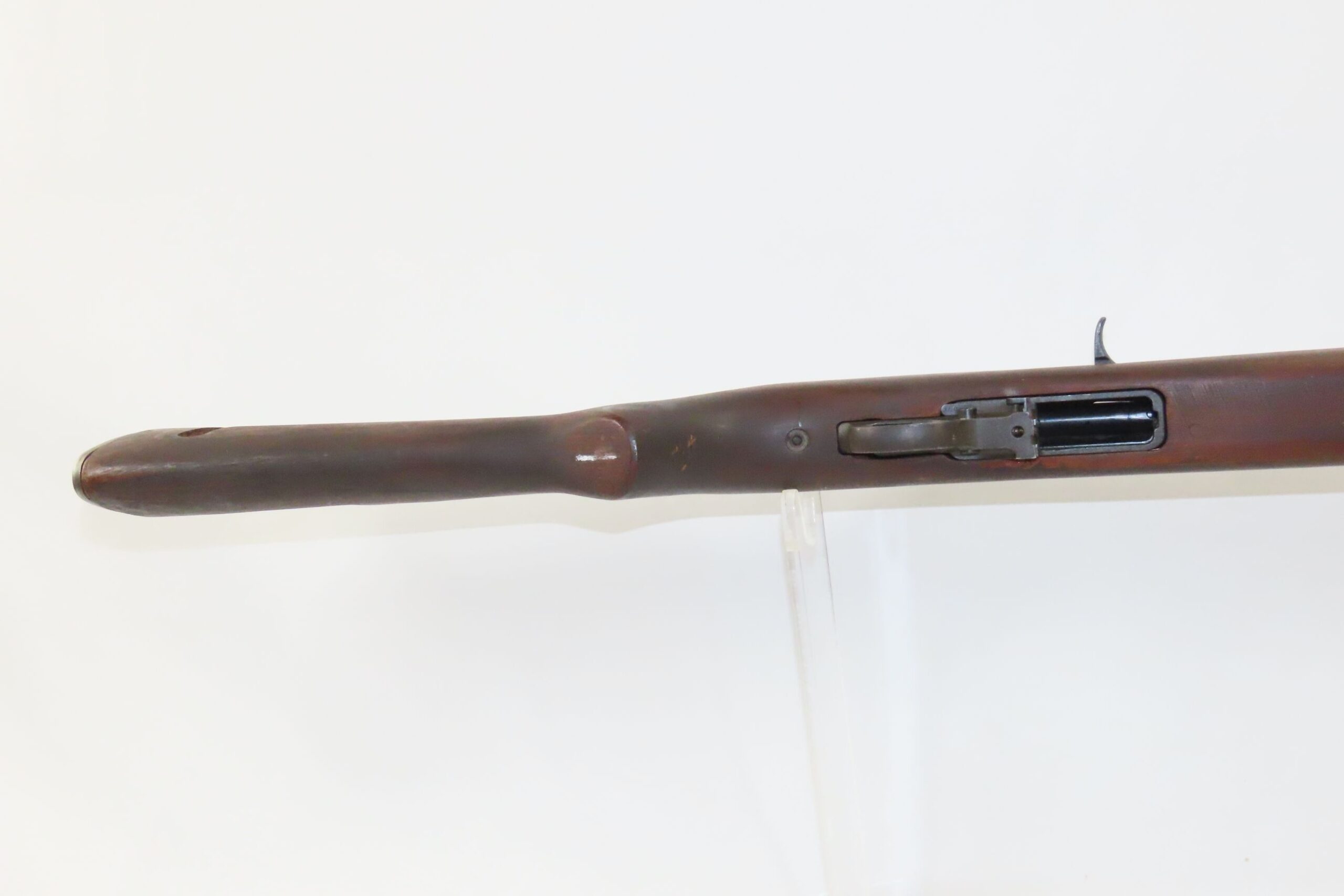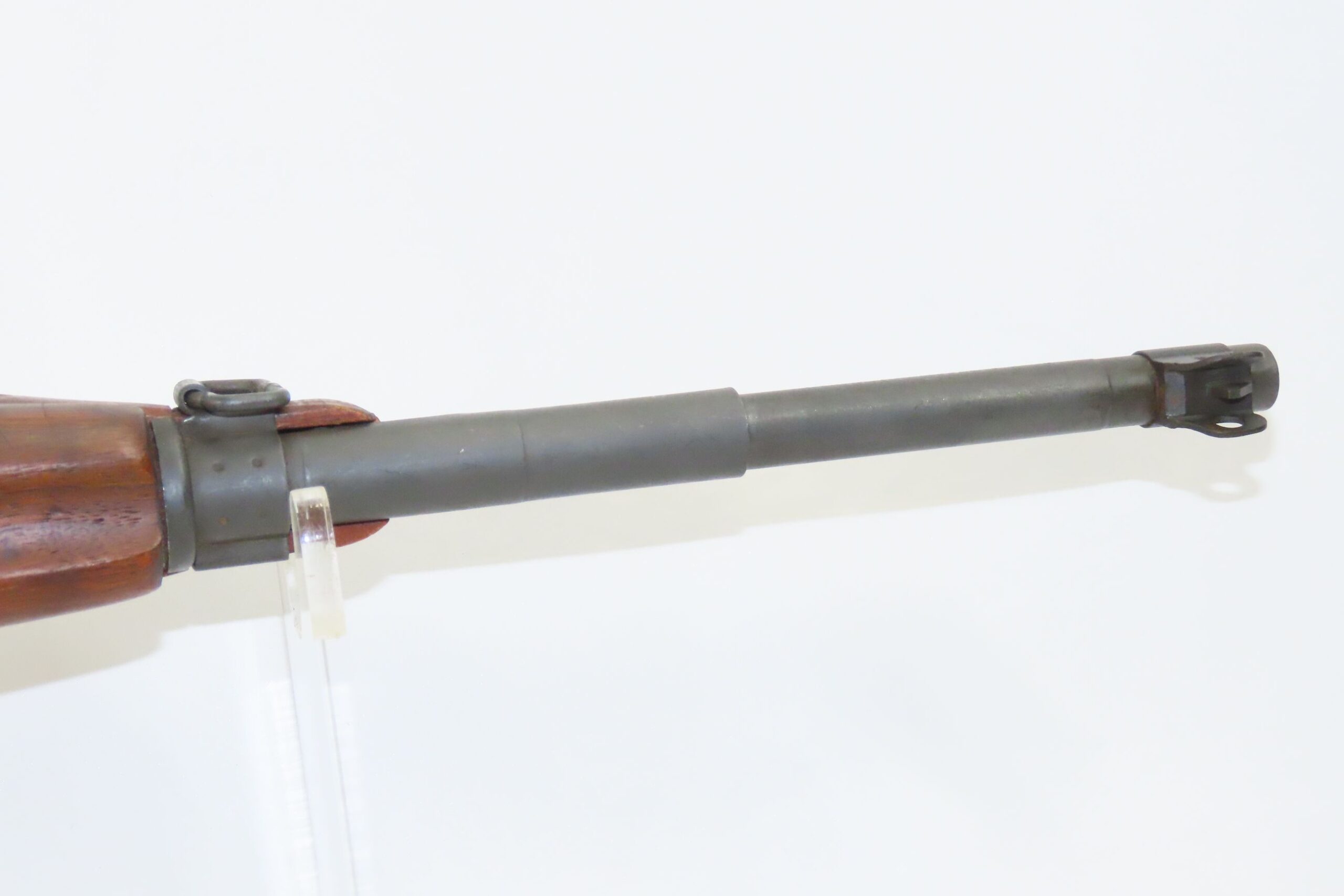- No products in the cart.
1944 World War II Era U.S. INLAND M1 Carbine Dayton, Ohio .30 Caliber by Inland Division of GENERAL MOTORS
This gun is listed as a Curio & Relic and will need to be shipped to your local FFL dealer at our expense.
Product Description
1944 World War II Era U.S. INLAND M1 Carbine Dayton, Ohio
.30 Caliber by Inland Division of GENERAL MOTORS
Here we present a C&R U.S. Inland M1 Carbine, manufactured in 1944 at the Inland Division of General Motors in Dayton, Ohio. This .30 caliber semi-automatic rifle was first used by the United States Armed Forces on October 22, 1941, and Inland Division was the first of 10 manufacturers to receive an order two months later in November of 1941 and was one of the only two still producing carbines when the war ended in 1945. Of the 6,110,730 carbines made of all types built during the war, Inland made 2,625,000, or 43% of the total. Despite having similar name and appearance, the M1 Carbine is not a carbine version of the M1 Garand rifle. They are different firearms and use different ammunition.
Prior to World War II, U.S. Army Ordnance received many reports that the full-size M1 Garand was too heavy and cumbersome for most support troops, such as mortarmen and radiomen to carry. During prewar and early war field exercises, it was found that the M1 Garand impeded these soldiers’ mobility, as a slung rifle would frequently catch on brush, bang the helmet and tilt it over the eyes. Many soldiers found the rifle slid off the shoulder unless slung diagonally across the back, where it prevented the wearing of standard field packs and haversacks. Additionally, Germany’s use of glider-borne and paratroop forces to launch surprise ‘blitzkrieg’ attacks behind the front lines generated a request for a new compact infantry weapon to equip support troops. This request called for a compact, lightweight defensive weapon with greater range, accuracy and firepower than handguns, while weighing half as much as the Thompson submachine gun or the M1 rifle. The U.S. Army decided that a carbine would adequately fulfill these requirements and specified that the new arm should weigh no more than five pounds and have an effective range of 300 yards. Paratroopers were also added to the list of intended users and a folding-stock version would also be developed.
The M1 carbine was also one of the most cost-effective weapons used by the United States military during World War II. At the beginning of World War II, the average production cost for an M1 carbine was approximately $45, about half the cost of an M1 rifle at approximately $85 and about a fifth of the cost of a Thompson submachine gun at approximately $225. The .30 Caliber carbine ammunition was also far cheaper to produce than the standard .30-06 ammunition; used fewer resources, was smaller, lighter, faster and easier to make. These were major factors in the United States military decision to adopt the M1 carbine, especially when considering the large numbers of weapons and ammunition manufactured and transported by the United States during World War II.
The overall condition is good. Excellent action and bright, sharply rifled bore. The stock is solid. “RRAD” arsenal marked and “P” inside a box on the pistol grip. Import marked. 30 round magazine shipped where legal.
This firearm is classified as a Curio & Relic.
Barrel is 18 inches.
Caliber: .30 Carbine
Overall condition as seen in photos.
Very Fast. Very Safe. FREE SHIPPING. Will need to be sent to your local FFL or C&R licensee. This firearm is classified as a Curio & Relic.
Guaranteed AUTHENTIC & Includes CERTIFICATE OF AUTHENTICITY.
www.ancestryguns.com
$2200
#230223
Ancestry Guns considers all of our antique firearms as non-firing, inoperable and/or inert. Title 18, U.S. Code, Section 921(a)(16) defines antique firearms as all guns made prior to 1899. This law exempts antique firearms from any form of gun control or special engineering because they are not legally considered firearms. No FFL, C&R, or any license is required to possess, transport, sell or trade antique guns. All firearms sold by Ancestry Guns that were manufactured prior to 1899 are considered Antiques by the US BATF (United States Bureau of Alcohol, Tobacco & Firearms). Therefore, all of Ancestry Guns' antique guns may be shipped to all US States and most nations around the world.
This gun is listed as a Curio & Relic and will need to be shipped to your local FFL dealer at our expense.

























